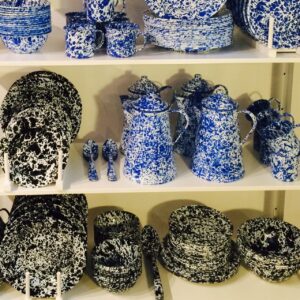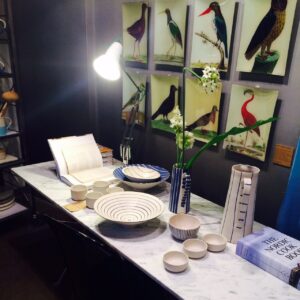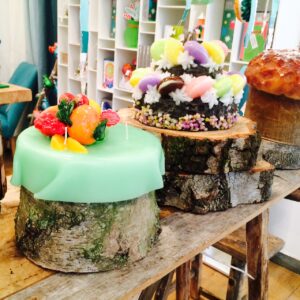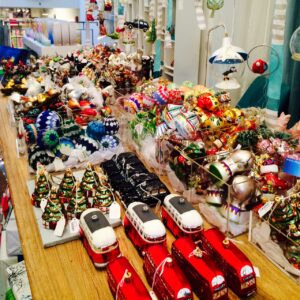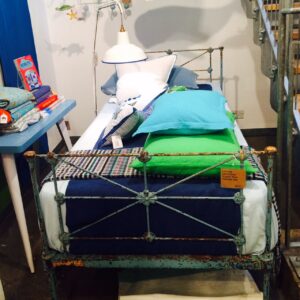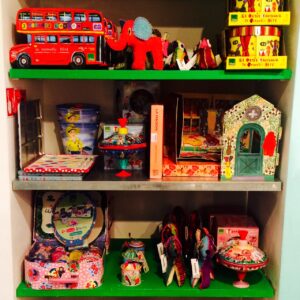Designers Guild is one of those brands that just quietly goes about its business in a very understated way. Whilst fashions come and go, colours are in or out, Tricia Guild just sticks to what she is famous for and justly so. They have a global fabric business but to really understand the brand their Kings Road Store is the flagship. I was passing the store this week and I had a few spare minutes so I parked up and popped in to see what was new. Half an hour later I left refreshed, and with a smile. The shop looked amazing, incredibly well curated, beautifully cared for yet commercially laid out. A rare combination where the visual standards are superb, the product is a mix of new DG product but with a curated collection of vintage, small artisans and never seen before product.
Ten out of ten. We all rave (do we still?) about Merci in Paris but lets not forget designers Guild. In my humble view the store is simply world class.
Milton Keynes may not be the most exciting city but if you are passing through it’s definitely worth visiting Bletchley Park. The hugely successful film, The Imitation Game, has put Bletchley Park on the map and it has obviously benefited from some serious Lottery Funding. But go now before the crowds descend and before the restoration goes too far. It’s not an easy sell to explain the huge complexity of the “Bombe” and the whole decoding process but they have done a great job of really focusing on this and trying to explain the significance of what was achieved by a tiny group of “mathematicians” working in just a few small wooden huts. They are some very impressive graphic displays but I personally felt that some of the charm has disappeared with too much restoration and too many stylised graphics. Go now and make sure you spot the unrestored buildings adjacent to the carpark, and pray that these are not “restored”.
Well it was a new one on me when we ventured to the verdant Spanish region of Asturias. On our first evening in llanus (pronounced) Janus, we were scouting for somewhere to eat when we first experienced Sidra, the local term for Cider. But Sidra isn’t just a drink (and I mean no offense to any cider lovers) it’s a wonderful social tradition in this expansive Northern corner of Spain.
Sidra is a combination of a beautiful drink served in a way that dates back generations and it is at the very heart of the community. Let’s start with the “drink”, it’s a basic cider made from local pressed apples. It’s brewed locally and is served in rather simple functional green bottles, the make doesn’t really matter for it is fairly utilitarian beverage, albeit a very good one. The difference is, and this is the key, the Sidra is only gently fermented and does not produce a strong gas, it’s almost flat and has a very strong unsweetened almost soft apple juice taste.
Sidra is always served in a traditional glass, and one that we recognised instantly, it has always been one of our favourite glasses but we loved it before we realised its other context. The glass is what you would call a beautifully proportioned simple tumbler, about 10cm tall and 7cm wide across the diameter. It’s a man size handful and is made more or less like a wine glass with a very fine thin glass. We have always loved them and use them as daily tumblers. LSA sells them as the GIO Tumbler and they were a great seller at The Conran Shop, but they have deep routes as the humble Sidra glasses.
What happens next is where the magic starts; the Sidra is always poured in small servings because the pouring creates a very gentle fizz. It’s an art but easy to master, hold the bottle as high as you possible can, generally in your right hand above your head. Then with the glass as close to the floor as you can go, aim to pour the Sidra in a “splash” into your glass. Depending on your height the Sidra will free-fall some four or five feet and most of it will end up in the glass. Don’t worry if you splash some on the floor, that’s part of the theatre.The key is only to pour a couple of inches, enough to drink before the bubbles disappear.
But here is the charming part, you pour for your friend(s), sharing both the glass and the bottle. When you have finished your serving, leave just a splash, swirl it in the glass and gently twist the glass washing out the excess onto the ground. The point of the twist is to make sure the excess washes the lip of the glass where your mouth has been before passing the glass on.
What was it that captivated me? The glass, the Sidra, the performance yes, but most of all the deep community tradition that is embued in Asturians. And this is not a show for the tourists; this is how it is done, day in day out.
Thank you to Mauro, a proud Asturian.



